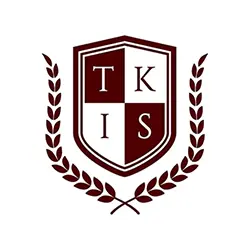In the age of digital innovation, the traditional classroom setting is not the only place where learning happens. Many students and parents are now asking the question: “can online schools tell if you cheat?” Let’s dive deep into the possibilities and implications of online schooling.
Understanding Online Schooling
Online schooling, often referred to as e-learning or virtual schooling, is a mode of education where students engage in their curriculum via the Internet, using various platforms and tools designed to facilitate a virtual learning environment.

Pros of Online Schooling:
Flexibility: Students can often set their own pace, which is especially beneficial for those who need more time to grasp certain subjects or those who want to accelerate their learning.
Accessibility: Perfect for students living in remote areas or those with mobility issues.
Customization: Many platforms allow students to focus on their areas of interest.
Cons of Online Schooling:
Lack of Social Interaction: Some students might miss the traditional school environment’s social aspects, such as extracurricular activities.
Self-Discipline Required: This mode requires a certain level of self-motivation and discipline.
Technical Challenges: Reliable internet and a good device are prerequisites.
Transitioning to Online School: A Practical Guide
With the global shift towards remote work and learning, more families are exploring the idea of online school. If you’re wondering, “Can I do online school instead of traditional schooling?”, you’re not alone. Here’s a guide to help you transition smoothly.
Steps to Consider When Moving to Online Schooling:
Research: Look into accredited online schools that fit your educational goals.
Tech Setup: Ensure you have a reliable computer and internet connection.
Designate a Study Space: This will help in creating a structured learning environment at home.
Stay Connected: Engage with online school communities and participate in discussions.
Time Management: Plan your day, ensuring you allocate time for breaks, just as you would in a regular school.
Seek Support: Just like in traditional school, don’t hesitate to ask teachers or peers for help.
Online vs. Traditional Schooling: A Comparative Glance
As technology becomes more integrated into our daily lives, education is evolving. Many are now faced with a choice and wonder, “Can I do online school instead of going to a physical school?” Let’s weigh the two options.
Traditional Schooling:
Pros:
Structured Environment: A regular schedule helps many students stay on track.
Social Interactions: Students learn vital social skills, and teamwork, and forge friendships.
Immediate Feedback: Direct interaction with teachers allows for immediate clarification of doubts.
Cons:
Less Flexibility: Students have to adhere to a fixed schedule and pace.
Commuting: Daily travel can be time-consuming and tiring.
One-size-fits-all: The curriculum might not cater to individual students’ strengths or interests.
Online Schooling:
Pros:
Flexibility: Students can often choose when and where they learn.
Self-Paced: Students can take their time or move ahead swiftly, depending on the subject.
Wider Course Selection: Often, there are more course options available online.
Cons:
Possible Isolation: Reduced face-to-face social interactions.
Requires Self-Motivation: Without the traditional structure, some students might struggle.
Dependence on Technology: Learning can be halted due to technical issues.
Making the choice between online and traditional schooling is deeply personal and should be based on the individual’s learning style, goals, and circumstances. Whatever the choice, the primary aim remains consistent: a quality education.

Homeschooling 101: The Wild, Wonderful World of At-Home Education
Alright, folks, let’s dive straight into this vast sea called homeschooling! Picture this: a sunny morning, a mug of your favourite beverage, kiddos in PJs, and a day of learning ahead. Sounds like a dream? Well, this can be your reality. But don’t be fooled; there’s more to homeschooling than warm fuzzies. It’s a mix of delightful chaos, strategic planning, and some off-the-wall fun. So, ready to embark on this unpredictable journey? Buckle up!
The Great Big Why
Before we dart off like squirrels, let’s take a moment to ponder. WHY homeschooling? Some jump aboard this train for flexibility, some for personalized curriculums, and others because, well, their kiddos march to the beat of their own drum. Your reasons will set the tone, direction, and pace of your homeschooling journey.
Blueprints, Frameworks, and Paper Aeroplanes
Choose Your Curriculum – Are you leaning towards structured lesson plans or a more free-flowing, child-led approach? There’s a plethora of choices out there: classical, Montessori, unschooling, eclectic… the list goes on. Dive in, do your homework (pun intended), and see what tickles your fancy.
State Regulations: Newsflash! Homeschooling, while wonderful, does come with some legal ties. Each state or country may have its rules. Some might need you to register, while others might want an annual assessment. A tad boring? Yep. But important? Absolutely.
Getting Your Space Ready: Nope, you don’t need a Pinterest-perfect classroom. But a designated learning spot? Yep, that helps. It could be the kitchen table, a cosy nook in the living room, or even a blanket fort (why not?!). It’s all about creating a conducive environment for learning.
A Typical Day? Ha, What’s That?
The beauty of homeschooling lies in its unpredictability. Some days might flow like a well-rehearsed song, while others could be… well, a bit like jazz improvisation.
Routine over Schedule: While a strict 9-3 might not be everyone’s cup of tea, having a flow to the day can work wonders. Perhaps mornings for core subjects, afternoons for exploratory learning, and evenings for reflection.
Diverse Learning: Books are treasures, but so are nature walks, kitchen experiments, and community interactions. Broaden your horizons. The world is your classroom.
Breaks, Breaks, and More Breaks: Just like a campfire needs oxygen, young minds need breaks. These aren’t just for relaxation but also for assimilation. So, snack breaks, dance breaks, or even staring-into-space breaks are all fair game.

Resources Galore!
While you might not have the school library at your disposal, the digital age brings a wealth of resources to your fingertips:
Online Platforms: From science experiments to history documentaries, the web is a treasure trove.
Local Libraries: An underrated goldmine. Many even have special sections or programs for homeschoolers.
Community Resources: Think museums, nature centres, local artisans, or even Grandpa Joe with his war stories. The community can offer a rich tapestry of experiences.




